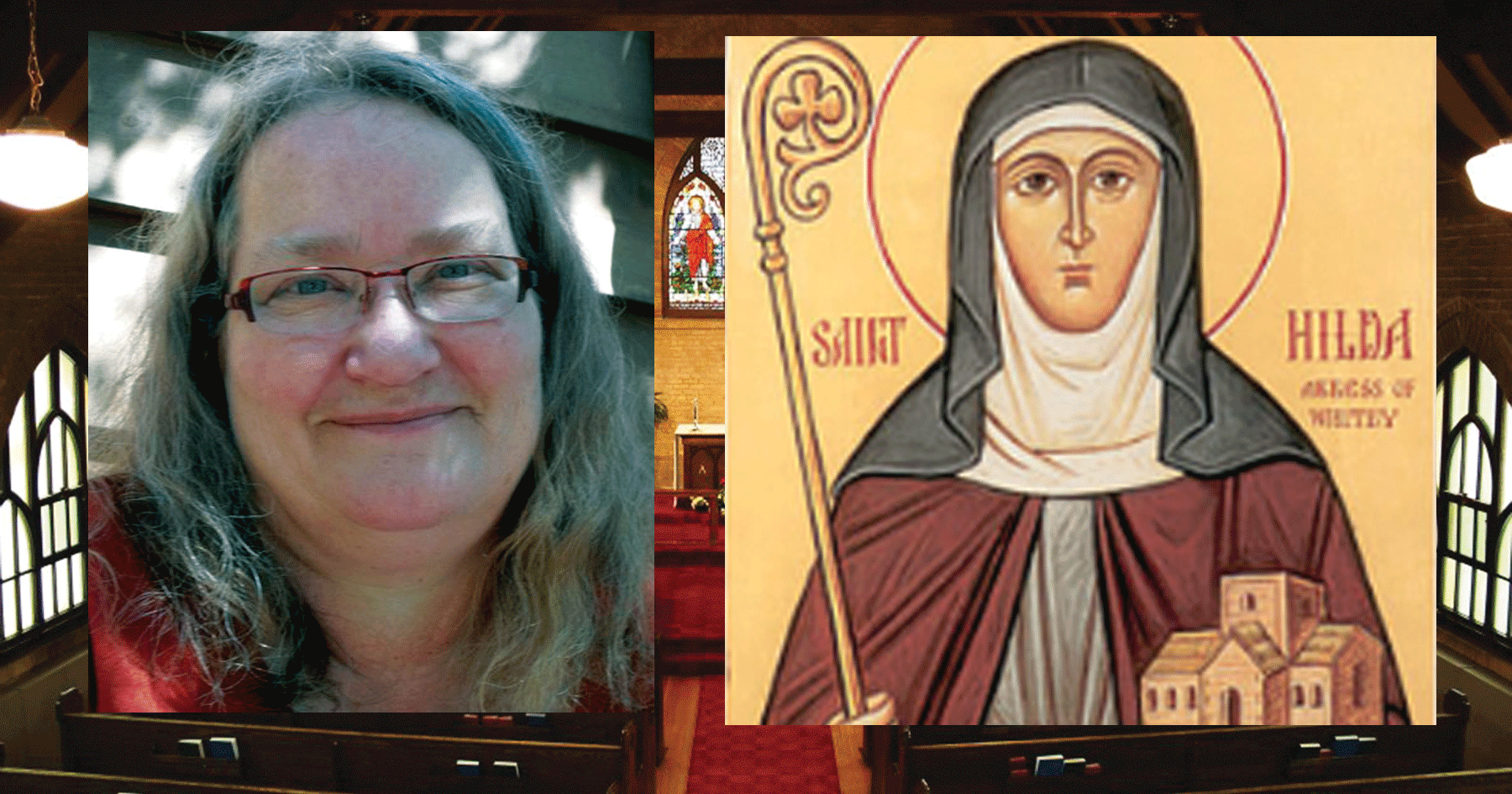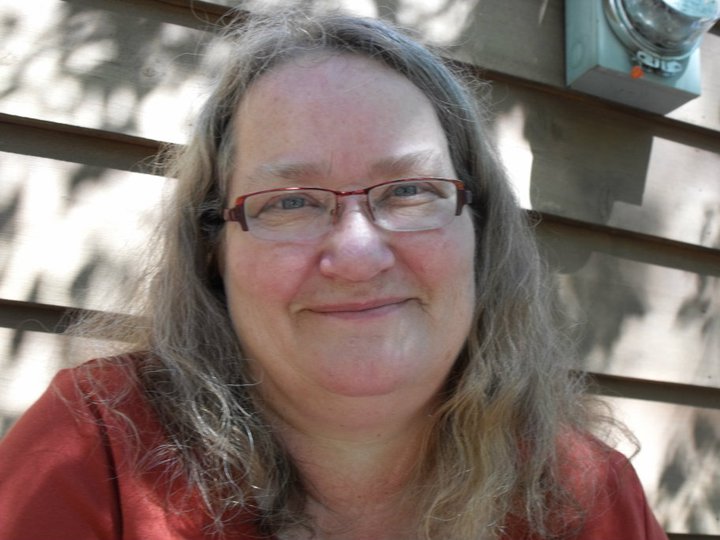Hilda (Hild) of Whitby, also known as “The Abbess of the English People” is one of the most venerated female saints in England. She was born in 614 in the north of what is now known as England, where her parents lived in exile in the small British kingdom of Elmet. Elmet was an independent Brittonic Celtic-Cumbric speaking kingdom and would have been, in what we now call the West Riding of Yorkshire.
Hilda was brought up in the court of King Edwin and was baptized on April 12th, 627 on the site of what is now York Minister, along with King Edwin, by Paulinus, who was the first Bishop of York. The structure was built for this occasion, the culmination of a mission by Pope Gregory the Great.
She was taken under the care of Saint Aiden after her father died of poison. Saint Aiden was working as a missionary to Northumbria, and had established himself promoting the Celtic/Ionic worship in England. Aidan was a wise, and faithful patron, and soon Hilda committed herself to service to the Lord. Tradition says that Hilda spent a year contemplating and praying, searching for discernment on each of the steps she made in her career. A year to decide to become a servant of the Lord, a year to make a step across the channel, towards a move to Gaul where she planned to work alongside her sister, Hereswith, at Chelles. While waiting, St. Aidan called her back and set her up with a small piece of land near the river Wear in Northumbria. Her steps to sainthood were slow and small, “No one becomes great overnight” is certainly true for Hilda. And it may be noted that the name of her first monastery is not remembered, only that her director had given her the land.
It was here that the future saint, as well as other devout nuns, taught the traditions of Irish monasticism that had been brought to England by Aidan. She was appointed the second abbess of the monastery of Hartlepool in 649, and in 657, she became the founding Abbess of Whitby, which was a “double abbey” of men and women, living separately, but praying and working together.
Because of its prestige, Whitby was chosen as the venue of a Synod which was held in 664, to settle contentious differences between the Roman and Celtic Churches, including a resolution over when to celebrate Easter. [The Roman church and the Celtic Church had celebrated this Holy Day on different days] Hilda spoke passionately for a reconciliation, but the Roman rules championed by Saint Wilfred were adopted. Although disappointed, she graciously led her community through the consequent changes.
The Venerable Bede described Hilda as a women of great energy, devotion and grace, who was a skilled administrator and teacher. She fostered trades and used the arts in worship. She recognized the gifts of Caedamon, an illiterate cowherder at the Abbey, who is now known as the first English poet.
Hilda was also recognized as a great spiritual director. She established a theological school and a library, and set a high standard of holiness and charity. Five of her students became Bishops, two of whom, John of Beverley and Wilfred of York – are honoured as saints.
Bede said of her monastery, “No one there was rich or poor, for everything was held in common and no one possessed any personal property.” Bede also celebrates her skills as an abbess, for her order was noted for its observance of peace, charity and justice. Hilda’s strength and wisdom were known around the whole country and her opinions were sought out by Kings and power figures.
She has become the patron of many schools and colleges all over the world including the University of Toronto where daily services are held in the Lady Chapel by Trinity’s Faculty of Divinity.
Local piety and tradition recall several miracles worked through St. Hilda’s intercession; among the most celebrated is the petrification of snakes that infested the vicinity of the abbey when it was founded. One story says that she flung them all over the cliffs where they became stone. The Whitby Coat of Arms proudly displays three of Hilda’s snakes.
Hilda died at Whitby Abbey on November 17, 680.
Hilda of Whitby’s example of self-sacrificial leadership and courageous acceptance of what the gathered church discerned as God’s will, is a challenge to us today. She was willing to accept the Roman mission for the sake of the unity of the Church’s witness in that land.
Hilda’s memory lives on in the faith, hope and love of today’s Christian community in the town of Whitby. The Sisters of the Order of the Holy Paraclete continue the monastic tradition, with the mother house, St. Hilda’s Priory, Sneaton Castle, looking across the bay at the ruins where Hilda’s Church once stood.
“ God of peace, by whose grace the abbess Hilda was endowed with gifts of justice, prudence and strength to rule as a wise mother over the nuns and monks of her household, and to become a trusted and reconciling friend to leaders of the Church. Give us the grace to respect and love our fellow Christians with whom we disagree, that our common life may be enriched and your gracious will be done; through Jesus Christ our Lord, who lives and reigns with you and the Holy Spirit, one God, now and Forever.”
At the base of the cliff at Whitby one can find many spiralled ammonite fossils, named after Hilda, Ammonite Hildoceras.
In Christian belief, a saint is a believer recognized as having exceptional holiness, likeness, or closeness to God. However, for Anglicans and Lutherans, all of our faithful deceased are considered saints.
But there are some who are considered worthy of greater honour or emulation. In the Anglican tradition, the title of Saint refers to a person who has been elevated by popular opinion as a pious and holy person: a person who is not merely a believer, but has a higher level of holiness and sanctity. Hilda of Whitby is one of these.




